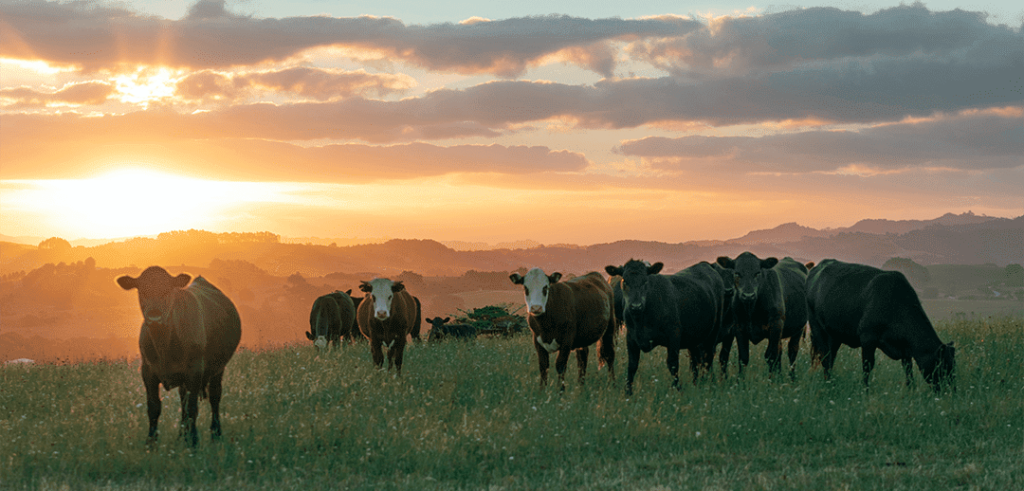
THERE is growing appetite among domestic and offshore investors to engage with land-owning beef producers in joint ventures.
In this week’s property review, Ben Craw and Nic Clancy from Oxley Capital Partners explain how these partnerships and transactions often get off the ground.
Oxley Capital Partners advises private families, corporates and domestic and global investors across the supply chain including large-scale farmland, vertically integrated agricultural operations and food manufacturing and processing. Over the past 12 months, it says it has worked on deals worth more than $500 million.
Managing director Ben Craw said the business works on a leverage model – in other words, working with a smaller number of higher-value clients, as opposed to volume.
“Acting primarily as ‘sell side’ advisors for clients, we seek to understand what investors and buyers are looking for and then connect that capital with vendors and clients,” he said.
Capital sources
Oxley senior analyst Nic Clancy said the company services owners of agricultural assets with sound management expertise who are looking for different sources of capital to grow their businesses.
“Many highly productive and innovative operators in Australia are chasing funds for growth initiatives such as integration, expansion, geographic or product diversification and funding succession,” he said.

Ben Craw
“Typically, these producers have grown their businesses over generations, usually with bank debt, and are reaching a point where they may hit a ceiling with their bank – so they are turning to investors or equity partners to help them continue to expand.”
Mr Craw said joint ventures allowed investors to back strong family businesses.
“This capital can facilitate liquidity in the business to fund growth, succession or wealth concentration,” he said.
“Producers seeking capital sources typically own a property or have a real estate play but may also have vertically integrated businesses involved in the supply chain.”
Offshore investors
Mr Clancy said much of the offshore investment was coming from the United States, Canada and Europe.
“Trade investors from the Asia-Pacific are more strategic, focused on opportunity for offtake. Food security is front of mind for many of those territories, particularly in the wake of COVID.”
He said despite rising farm-gate values, northern hemisphere investors still found the southern hemisphere an attractive entry-point.
“Australia offers scale, it has a strong domestic market and sits on the doorstep of a large export market, through the Asia Pacific, so there is opportunity.”
Mr Craw said potential investors consider the cost of agricultural land and water when determining their rate of return.
“Benchmarked across other territories in the southern hemisphere, and in terms of sovereign risk, Australia offers both value and scale and is therefore an attractive place to invest.”
However, he said it was not all smooth sailing.
“Inflationary pressures, input costs, access to labour and labour costs, rising interest rates and a softening in certain commodity prices have overlaid profitability and serviceability on recent deals.”
Mr Craw said it was important to factor complications into investment decisions – whether they are purely investment, farm-to-farm, decarbonisation or environmental, social and governance (ESG) opportunities.
“Despite the cycles, and more recently a disconnection between asset values and underlying profitability, there is still opportunity. There has been pressure on margins, but strong capital growth.”
Vertical opportunities

Nic Clancy
Mr Clancy said offshore investors were showing greater interest in vertical operations because there are different levers they can pull in terms of growth.
“Instead of buying and managing agricultural assets, some capital investors are choosing to back existing operators engaged in vertical or integrated businesses beyond the farm gate and across the supply and value chains.”
He said desirable joint ventures included businesses that had an ability to value add to an end product across the supply chain.
Domestic investors
Mr Clancy said opportunities were always presenting themselves and not just internationally.
“Strategic domestic investors and local institutional funds that have appetite are actively seeking opportunities, in the same way as their offshore counterparts.”
“Investors looking at different ways to generate an agricultural return often look at the broader supply chain, and where that asset or group might fit in.”
Mr Clancy said today, many groups were seeking scale, getting closer to their end customer and controlling more of the supply chain.
Investment cycles
In terms of investment cycles and seasons, Mr Clancy described the domestic market as robust.
“As longer-term investors, they are looking beyond cycles, which is where they need to play. For offshore players, Australia offers a number of attractive factors including scale and low sovereign risk.”
In terms of capital expenditures, such as acquisition to increase business profitability, investors viewed scale as an upside, he said.
“It plays back to their internal rates of return and how they are able to achieve that, as opposed to buying a business – in other words, it operates at X, it spits out a return of Y.”
“Investors, such as corporates and family-run operations, want to acquire businesses that offer growth attributes in the short to long term so they can take advantage of that capital.”
Mr Clancy said there was plenty of appetite in those cycles.
“In terms of potential opportunities and modelling, larger institutional or pension funds consider cycles, in particular climatic movements – but like all investors, they look beyond one or two seasons.”
Deal times
Mr Craw said setting up joint ventures took time.
“Deals can take years to secure. Much of the work is typically conducted off-market in a bilateral fashion.”
“Firstly, opportunities are scrutinised with clients including how the financials are positioned in terms of profit and loss and balance sheets. Then, the most logical buyers are identified and approached.”
Most clients were seeking a discreet transaction.
“They don’t want the market to know what they are doing, so we connect the dots – between investors and vendors – and determine what the capital structure would look like.”
Mr Craw said if an acquisition is being made by an offshore investor, Foreign Investment Review Board (FIRB) restrictions need to be upheld.
Future
Both Ben Clancy and Nic Craw expect transaction activity for farmgate to supply chain joint ventures to increase next year.
“Activity from groups looking to acquire and expand slowed when interest rates rose, however inquiry over the coming six to twelve months is anticipated to normalise as interest rates potentially fall.”

Oxley Capital Partners and other advisory entities promote and facilitate domestic and overseas investors to find owner/producers who want extra capital to either survive or expand.
The reality is that the prospective investors plan to achieve capital gains on land values not dividends from operational profits.
And that leaves the owner/operator unable to buy back.
It is time for agricultural commodities to return sufficient profits to enable owner/producers to expand in their own right.
All very interesting; particularly at this stage of the cycle. My 2-cents worth, is to allow JV’s certainly, but only with the operation … but, keep the grazing/farming land as a separate asset (in a separate legal entity, like a Trust) from the operations entity of day, a Pty Ltd Company … and do ensure the operation pays an appropriate, arms-length rent/lease payment: in-advance; each quarter. IMO
Have a long conversation with your lawyer and accountant, first.
Have a ‘Partnership/JV Agreement’ in place prior to formalising a JV: complete with Sunrise (whom contributes what and how), Day-to-Day (whom does what operationally and regarding management delegations … ), and Sunset (how divorce proceedings play-out, including a valuation formula … and an embedded Buy/Sell Agreement) Clauses. IMO
Good points Michael
I can see some real advantages if the people on both sides of the deal share the same values.
And long term view.
There are some great young operators getting around that don’t have access to capital, but are highly skilled & would make terrific partners and add far more value to a new venture / business.
A lot to be said for having ‘skin in the game’ and getting right away from all the challenges and problems of an employer versus employee situation.
What is mortgage risk of the overseas company or partner going belly up and property taken from control of original owners